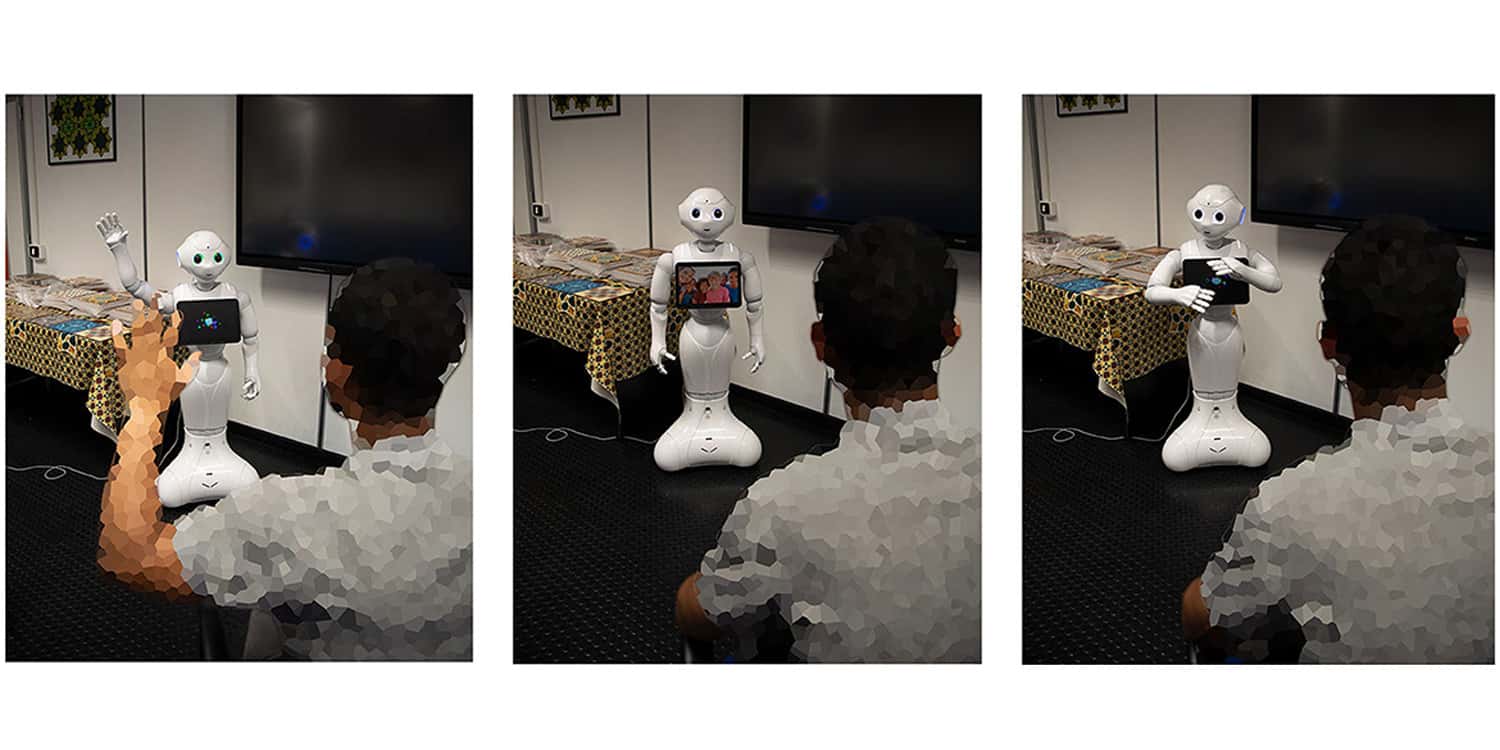

In a recent scientific paper published in Frontiers in Psychology, a team of Italian researchers have developed an innovative approach to assist individuals with Autism Spectrum Disorder (ASD) using a humanoid robot named Pepper, integrated with OpenAI’s advanced conversational artificial intelligence. This novel system aims to enhance social interaction, communication, and cognitive skills for individuals with ASD, offering a promising avenue in therapeutic and educational settings.
Autism Spectrum Disorder presents unique challenges to individuals and their families, often requiring tailored educational and therapeutic approaches. Traditional methods, while effective, can sometimes fall short in addressing the diverse needs and preferences of those with ASD. Recognizing this gap, researchers were driven to explore the potential of combining advanced robotics with cutting-edge artificial intelligence. Their goal was to create a more dynamic, engaging, and adaptive learning environment that could cater to the specific requirements of individuals with ASD.
The use of technology in ASD therapy is not entirely new, but the integration of a social robot like Pepper with AI technologies like OpenAI’s ChatGPT is a novel approach. This combination aims to leverage the predictability and consistency of robotic interactions with the natural language processing capabilities of AI, creating a hybrid system that is both reliable and responsive to the nuances of human communication.
“As a multidisciplinary group, we were interested in exploring the intersection of technology and healthcare, particularly in the context of Neurodevelopmental Disorders (NDDs), which present a significant challenge to families and society,” said study author Eleonora Bilotta, a professor of general and cognitive psychology at the University of Calabria. “The potential of AI and social robotics, like the Pepper robot integrated with ChatGPT, to support individuals with Autism Spectrum Disorder (ASD) represents a promising, innovative approach in educational interventions.”
At the heart of this study is the Pepper robot, a humanoid robot designed for social interaction. Pepper is equipped with cameras, microphones, and various sensors, enabling it to perceive and respond to its environment. The robot’s operating system, NAOqi, supports its physical movements and interaction capabilities.
The innovative twist in this research comes from integrating Pepper with OpenAI technology. This integration enables real-time processing of language and speech, allowing Pepper to engage in natural conversations with individuals. The system uses advanced speech recognition to convert spoken language into text, which is then processed by OpenAI’s language understanding algorithms. The AI generates appropriate responses, which Pepper delivers using speech synthesis.
“The adaptability and responsiveness of the ChatGPT-integrated Pepper robot in simulating real-life interaction scenarios with ASD subjects were particularly striking,” Bilotta told PsyPost. “The nuanced and context-aware dialogues initiated by the robot demonstrated a level of engagement that was encouraging for future educational and possibly, with the support of an expert, therapeutic applications.”
The researchers outlined two primary interaction scenarios – informal and structured – both tailored to enhance the learning experience for individuals with ASD. In the informal scenario, Pepper engages in open-ended conversations, allowing for spontaneous communication and social interaction. This setting aims to create a comfortable environment for individuals to express themselves freely and build a rapport with the robot.
By engaging in casual, unstructured conversations, individuals with ASD can practice social skills in a low-pressure environment.
In contrast, the structured scenario is more guided, with Pepper leading problem-solving tasks and structured activities. This approach is designed to develop critical thinking, decision-making, and cognitive skills in a supportive and methodical environment. The robot guides the individual through various stages of problem-solving, offering feedback and encouragement. For many with ASD, predictability and routine are essential and structured scenarios would provide a consistent framework.
Both scenarios utilize Pepper’s capabilities, including speech recognition, facial expressions, and body language, along with OpenAI’s natural language understanding and generation. This creates a dynamic and interactive experience, adapting to the individual’s responses and promoting engagement.
“The key takeaway is the potential of advanced technology, such as AI-integrated social robots, to aid in cognitive functioning for individuals with ASD,” Bilotta told PsyPost. “This study shows how these technologies can be adapted to meet specific educational needs, offering personalized and interactive experiences that can complement traditional approaches.”
But the benefits at this point are only theoretical. “One major caveat is the need for extensive real-world testing to validate the effectiveness of such systems. Questions regarding long-term impacts, the generalizability of results, and the integration of these technologies into existing educational/therapeutic frameworks still need to be addressed,” Bilotta explained.
She added that “it’s important to consider the ethical implications and ensure the development of such technologies is guided by a human-centric approach, focusing on enhancing the quality of life for individuals with ASD, while respecting their autonomy and privacy.”
The ethical implications are multifaceted. Firstly, there’s the matter of informed consent: ensuring that guardians of individuals with ASD fully understand and agree to the use of such technology in therapy. Privacy and data protection are paramount, as personal information and interaction data must be securely handled and used responsibly. It’s also crucial to ensure that the technology does not replace human interactions but rather complements them, maintaining a balance between technological and human engagement.
“We are actively working on a project that aims to enhance the capabilities of our existing system by integrating not only ChatGPT’s advanced conversational and visual features but also incorporating the creative prowess of DALL-E,” Bilotta said. “This initiative is particularly focused on enriching the experiences of individuals with ASD and those with visual impairments. Our multidimensional approach is designed to foster more engaging and impactful interactions, catering to the unique needs of these individuals by leveraging the combined strengths of conversational AI and visual creativity.”
The study, “A social robot connected with chatGPT to improve cognitive functioning in ASD subjects“, was authored by Francesca Bertacchini, Francesco Demarco, Carmelo Scuro, Pietro Pantano, and Eleonora Bilotta.










